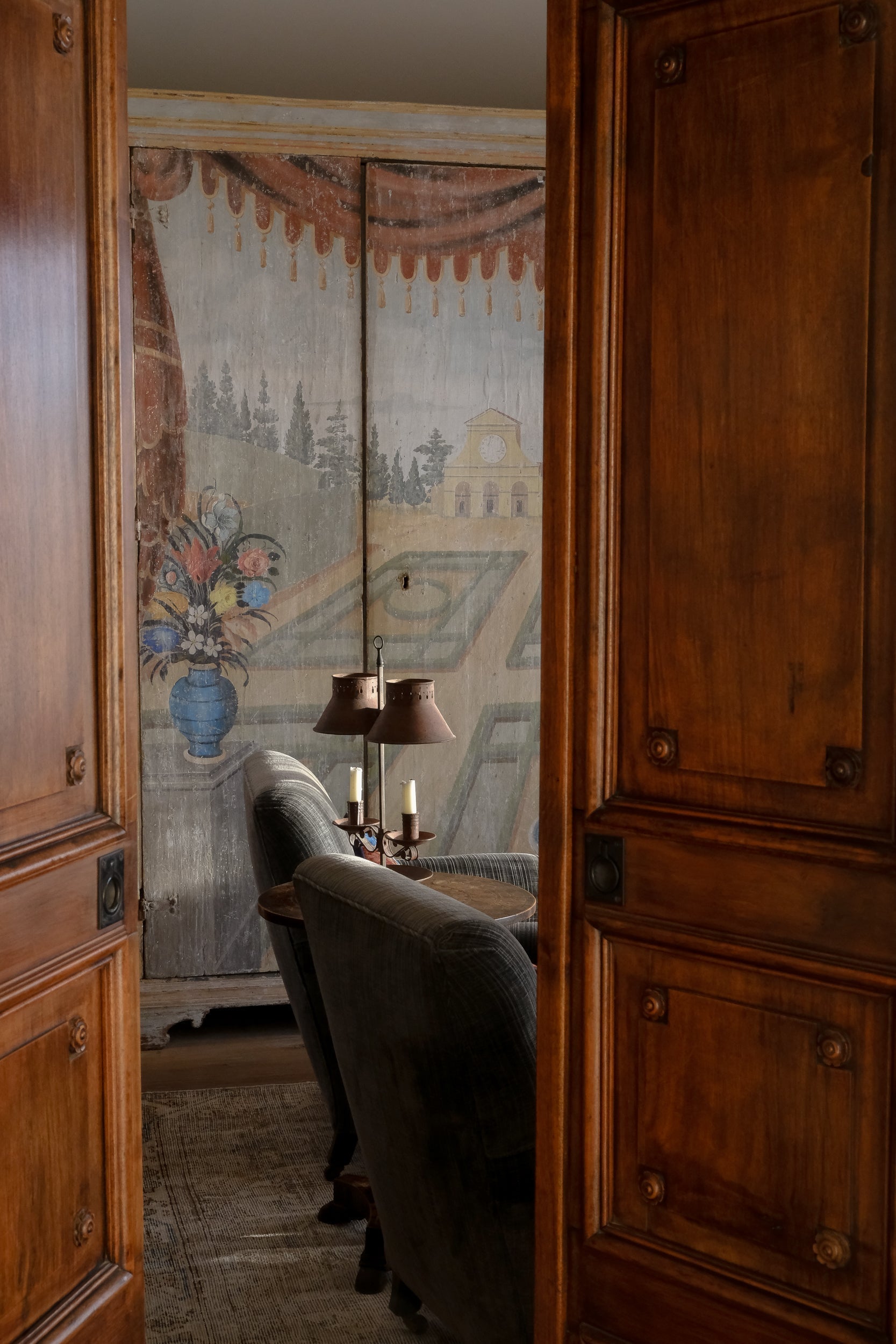Article: Post War Design
Post War Design
Tracing Europe’s shift from classic antiques to the bold, raw beauty of post-war Brutalism.

Most of you have followed me over the years on my buying trips to England, France, and more recently, Belgium, where I have primarily sourced 18th- and 19th-century antiques. My journeys to Belgium marked a turning point in my quest for unique pieces, sparking an interest in 20th-century antiques. In Belgium, I discovered pieces with simple, honest, and streamlined lines—quite distinct from the 20th-century designs I’d previously found in England and France. These discoveries inspired me to venture even further east into the Netherlands.
On my last buying trip, I delved deeper into the Netherlands, uncovering antique and vintage pieces with even bolder, more organic lines. This journey into the heart of Europe made me realize that the prevalence of 20th-century designs over 18th- and 19th-century antiques was a direct result of World War II. While the devastation and tragic loss of life during the war are well known, we often overlook its profound impact on furniture and design.
As I traveled further north and east into Europe, I was, in effect, retracing the timeline of the war’s invasion, moving south and west. This reversal revealed not only the loss of earlier furniture but also the evolution of post-war furniture styles, including the rise of Brutalist design.
Brutalist design emerged in the post-World War II era, primarily as a response to the need for rapid rebuilding. While the style is most commonly associated with architecture, its principles extended into furniture and interior design. In its early days, Brutalism prioritized survival, resulting in buildings made of raw concrete and industrial materials like glass, steel, brass, and brick. Over time, this practical, unembellished approach evolved into the beloved mid-century modern aesthetic, pioneered by a new generation of renowned architects, artists, and designers.
Brutalist furniture, much like its architectural counterpart, reflects this raw, functional ethos. It emphasizes organic forms, streamlined silhouettes, rough textures, and unpolished finishes, often prioritizing function over ornamentation. Furniture carved from branches and tree trunks is a quintessential example of the Brutalist aesthetic.
Today, Brutalist furniture is a favorite in modern interior design. Its industrial materials and bold shapes add depth and character to contemporary spaces offering a striking blend of minimalism and artistry. Similarly, glimpses of Brutalist interior design can be seen in some of the world’s most acclaimed projects, cementing its place as a timeless and versatile style.
On my last buying trip, I delved deeper into the Netherlands, uncovering antique and vintage pieces with even bolder, more organic lines. This journey into the heart of Europe made me realize that the prevalence of 20th-century designs over 18th- and 19th-century antiques was a direct result of World War II. While the devastation and tragic loss of life during the war are well known, we often overlook its profound impact on furniture and design.
As I traveled further north and east into Europe, I was, in effect, retracing the timeline of the war’s invasion, moving south and west. This reversal revealed not only the loss of earlier furniture but also the evolution of post-war furniture styles, including the rise of Brutalist design.
Brutalist design emerged in the post-World War II era, primarily as a response to the need for rapid rebuilding. While the style is most commonly associated with architecture, its principles extended into furniture and interior design. In its early days, Brutalism prioritized survival, resulting in buildings made of raw concrete and industrial materials like glass, steel, brass, and brick. Over time, this practical, unembellished approach evolved into the beloved mid-century modern aesthetic, pioneered by a new generation of renowned architects, artists, and designers.
Brutalist furniture, much like its architectural counterpart, reflects this raw, functional ethos. It emphasizes organic forms, streamlined silhouettes, rough textures, and unpolished finishes, often prioritizing function over ornamentation. Furniture carved from branches and tree trunks is a quintessential example of the Brutalist aesthetic.
Today, Brutalist furniture is a favorite in modern interior design. Its industrial materials and bold shapes add depth and character to contemporary spaces offering a striking blend of minimalism and artistry. Similarly, glimpses of Brutalist interior design can be seen in some of the world’s most acclaimed projects, cementing its place as a timeless and versatile style.
It is amazing to see this design style, born out of such a challenging time, evolve into something so celebrated and versatile.











